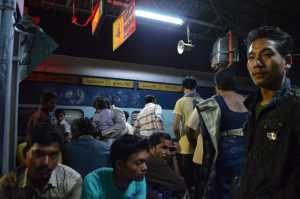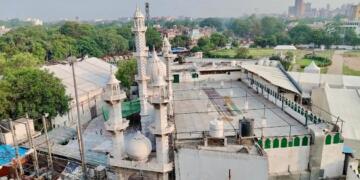 On 15th August 2012, thousands of Indians from the north east who lived in Bangalore landed up at the railway station. Estimates vary from ten thousand to thirty thousand. All of them wanted to go back to their original homes after rumours of racial attacks. This is how the country celebrated its 65th Independence Day, troubled with uneasy racial equations. The mainstream media covered the incident extensively, and rightly so. This awareness about people from the northeast being just as Indian as people from anywhere else in India, is long overdue.
On 15th August 2012, thousands of Indians from the north east who lived in Bangalore landed up at the railway station. Estimates vary from ten thousand to thirty thousand. All of them wanted to go back to their original homes after rumours of racial attacks. This is how the country celebrated its 65th Independence Day, troubled with uneasy racial equations. The mainstream media covered the incident extensively, and rightly so. This awareness about people from the northeast being just as Indian as people from anywhere else in India, is long overdue.
In February last year, nineteen year old Nido Tanya of Arunachal Pradesh was brutally attacked in Delhi. The attack took place in a busy market in broad daylight. Nido later succumbed to his injuries. This hate crime too was covered extensively by the media. It prompted the government to create stringent laws against all forms of racism.
Though hate crimes have been aplenty, people from the northeast have constantly borne the brunt. Creating a more inclusive society, wherein every Indian feels safe in any part of the country, requires a massive effort. Making laws is just one part of it, but what takes this effort much further is awareness. The news media is a key element in creating such awareness, one of the reasons it is known as the fourth estate. Unfortunately on this front too, they have put their well-known hypocrisy on display. Yes, they have covered racial attacks against people from the north east extensively. But what about covering something other than what grabs eyeballs? What about covering the on-goings on the ground in the northeast? What about covering these states with the same intensity as they cover the rest of India?
The mainstream media reported and discussed several issues in the last fortnight. But how many of us heard about the floods that ravaged Assam? Around eight lac seventy five thousand people were affected, and around one lac were displaced from their houses. Close to one and half lac hectares of crop area were inundated. Several towns were paralyzed and more than seven hundred villages were completely submerged. But scribes who ran behind Mikhail Bora in the same region not too long ago, kept completely mum! Parts of Arunachal too were completely devastated by the floods. Two rivers, Taro Tamuk and Dotung merged after excessive rains. Entire villages had to be shifted.
In Manipur, the conflict between tribal people and the Meitei majority took a new turn recently. The tribals have been up in arms after a special session of the assembly was convened and bills favouring the Meiteis were passed. Everyone apart from the Meiteis are considered outsiders, because there have been massive demographic invasions in nearby areas. The tribals who populate the hills have formed a Joint Action Committee and have brought the state to a complete standstill. They have begun boycotting elected representatives and several bandhs have taken place in the last few days. It is an unwelcome addition to a state with a fledgling economy and poor governance. Though this is a very simplistic way of presenting a complex situation, it is something the mainstream media is probably capable of doing. And yet, we see of none of this coming from them.
These are just two big issues the mainstream media has chosen to avoid. If one follows local news portals of the northeast, one would be surprised by the sheer amount of content that never makes it to the national media. Did you know that the Mizoram government has imposed a traditional dress-code on its female employees? We didn’t see the usual mainstream hue and cry over decisions of this nature! Do you know that Tripura is close to achieving a hundred percent literacy? The mainstream missed out on such an inspirational story! What many don’t realise is that each of the states has its own political class and complicated social equations. Each region holds very unique issues close to their hearts. But due to systematic omission and apathetic disregard, hardly any of these issues make it to the mainstream discourse. The media unfortunately, has itself become party to the discrimination against the northeast.
Pretending like these states don’t exist is highly irresponsible behaviour from the mainstream media. Yes, media houses are not non-governmental organisations. Yes, they have a business to run and it comes down to TRPs at the end of the day. Yes, they have their political prejudices and seek a favourable regime. But all media houses blatantly blacking out an entire section of the country is anti-national to say the least. If they seek to arrest their swift decline, they better get their act together.






























